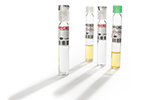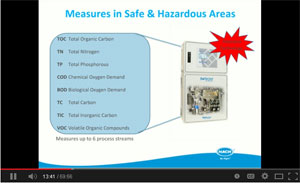-
Products
- Lab Instruments
-
Lab Meters and Probes
Calibration Standards Sension+ Meters and Probes
- Chemistries, Reagents, and Standards
-
Online Analysers
Ammonium Analysers Chlorine DioxideChlorine Analyzers
- CL17sc
- CL10sc Amperometric
- 9184 sc Amperometric
- Ultra Low Range CL17sc Colorimetric Chlorine Analyser
EZ Series Analysers- Iron
- Aluminium
- Manganese
- Phosphate
- Chloride
- Cyanide
- Fluoride
- Sulphate
- Sulphide
- Arsenic
- Chromium
- Copper
- Nickel
- Zinc
- Ammonium
- Total Nitrogen
- Total Phosphorus
- Phenol
- Volatile Fatty Acids
- Alkalinity
- ATP
- Hardness
- Toxicity
- Sample Preconditioning
- Boron
- Colour
- Nitrate
- Nitrite
- Silica
- Hydrogen Peroxide
- EZ Series Reagents
- EZ Series Accessories
- EZ sc Series Inorganics
- EZ sc Series Metals
- EZ sc Series Nutrients
-
Online Sensors and Controllers
Digital Controllers (Transmitters) Controllers (Analogue)
- SC4500
- Orbisphere 366x Ex
- Orbisphere 410/510 Carbon Dioxide
- Orbisphere 410/510 Oxygen
- Orbisphere 410/510 Ozone
- Orbisphere 51x Hydrogen
pH & ORP Sensors- 1200-S ORP
- 1200-S pH
- 12mm pH/ORP
- 8362 sc High Purity
- Combination pH/ORP
- Differential pH
- Digital Differential ORP
- Digital Differential pH
- LCP pH
Conductivity Sensors- 3400 Analogue Contacting
- 3400 Digital Contacting
- 3700 Analogue Inductive
- 3700 Digital Inductive
- 3798 sc Electrodeless
- 9523 Cation Conductivity
- 9525 DCCP System
-
Automated Lab Systems
Automatic Laboratory Analyser
- Samplers
- Test Kits & Strips
-
Microbiology
Prepared MediaKits Labware
- Accessories
- Funnels, Pumps & Manifolds
- Microbiology Filters
- Petri Dishes & Accessories
- Sampling Bags
- Vials, Tubes, Bottles & Racks
-
Lab Equipment and Supply
General Lab Consumables Books and Reference MaterialGlassware/Plasticware InstrumentsSafety Equipment Apparatus
- Claros Water Intelligence System
- Electrochemistry
- Parameters
- Industries
- Brands
- Service
- Support
- News & Events
Product Guide: Biotector On-line TOC
What is TOC?
TOC or Total Organic Carbon measurement is important because of the potential impact of the compounds that constitute the TOC loading of a water. This impact includes:
- detrimental effects on the environment
- direct or indirect effects on human health
- quality issues or inefficiencies in manufacturing processes
- direct or indirect impact on manufacturing uptime
Downloads
Application Report: The Management Tool with Operational and Commercial Impact
Application Report: Global adoption of TOC analyzers proves valuable for leading chemical company
Application Note: The importance of visible TOC levels.
Hach Biotector B7000, ITA field test, USA (Biotector granted BAT – best available technology)
Application Report: The Management Tool with Operational and Commercial Impact
Application Report: Global adoption of TOC analyzers proves valuable for leading chemical company
Application Note: The importance of visible TOC levels.
Hach Biotector B7000, ITA field test, USA (Biotector granted BAT – best available technology)
Product Spotlight
A Hach Biotector allows operators and managers to make non questionable decisions, to respond to incidents immediately, to optimise processes, protect WWTP’s or for energy optimisation, etc.
Production teams are more informed and therefore more accountable - as are their maintenance departments - WWTP teams can regulate and optimise their treatment processes, and process, EHS and WWTP teams work more cohesively together.
The Biotector B3500c product family is developed from the proven industrial B7000i platform to ensure safeguarding of sensitive processes in clean water processes, such as RO-/demi-water, drinking water, breakthrough in return condensate applications, cooling water, etc. because continuous trustworthy monitoring of these waters will allow energy and process optimisation and greatly reduce operating costs, emergency maintenance, risk of a plant stop - or worse shutdowns - and provides a fast process incident alert.
Hach Biotector B7000i TOC (COD) analysers have proven themselves over the past 2 decades in the most harsh sample streams as a Management tool because of its reliability and accuracy; which gave them full visibility to the (waste)water streams loading and thus processing insights.
Its patented Two Stage Advance Oxidation (TSAO) technology, provides maximum reliability, and the analyser is certified with an Up-Time of 99.86%, without sacrificing accuracy.
This industry leading TOC technology combines maximum reliability with low total cost of ownership (COO); which makes the Biotector a natural choice and provides our customer a piece of mind knowing your process is safeguarded.
Where other conventional TOC technologies fail, the industrial designed Biotector allows it to handle fats, greases and oils as well as particulate loads that normally lead to drift and high maintenance.
The Biotector analyser oxidizes all organic material by the patented oxidation method - including hydrocarbons, oils etc. - and measures this as TOC. Because of powerful oxidation technology involved, the probability of not detecting a spill/excursion is very limited to none.
Its patented Two Stage Advance Oxidation (TSAO) technology, provides maximum reliability, and the analyser is certified with an Up-Time of 99.86%, without sacrificing accuracy.
This industry leading TOC technology combines maximum reliability with low total cost of ownership (COO); which makes the Biotector a natural choice and provides our customer a piece of mind knowing your process is safeguarded.
Where other conventional TOC technologies fail, the industrial designed Biotector allows it to handle fats, greases and oils as well as particulate loads that normally lead to drift and high maintenance.
The Biotector analyser oxidizes all organic material by the patented oxidation method - including hydrocarbons, oils etc. - and measures this as TOC. Because of powerful oxidation technology involved, the probability of not detecting a spill/excursion is very limited to none.







